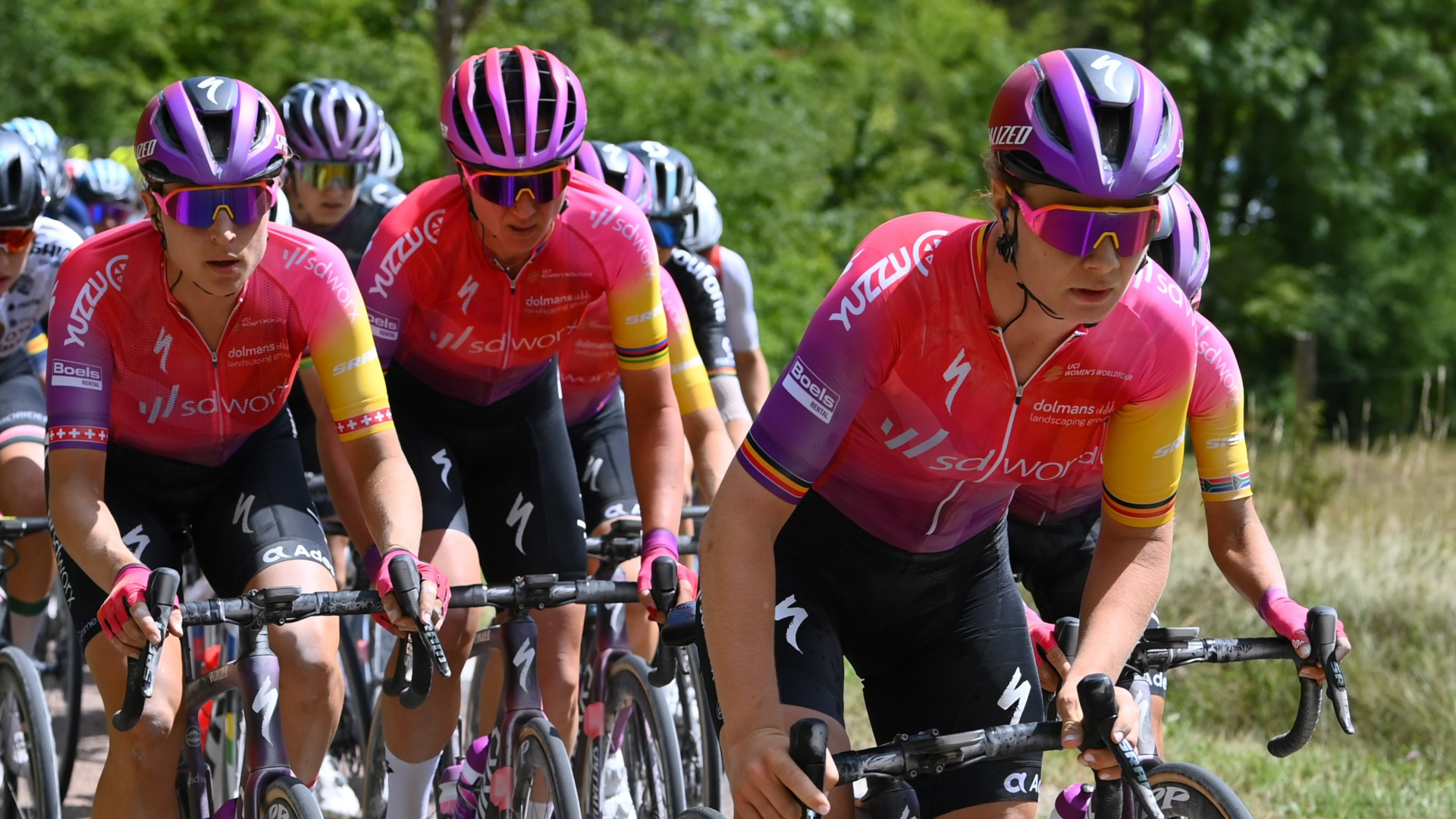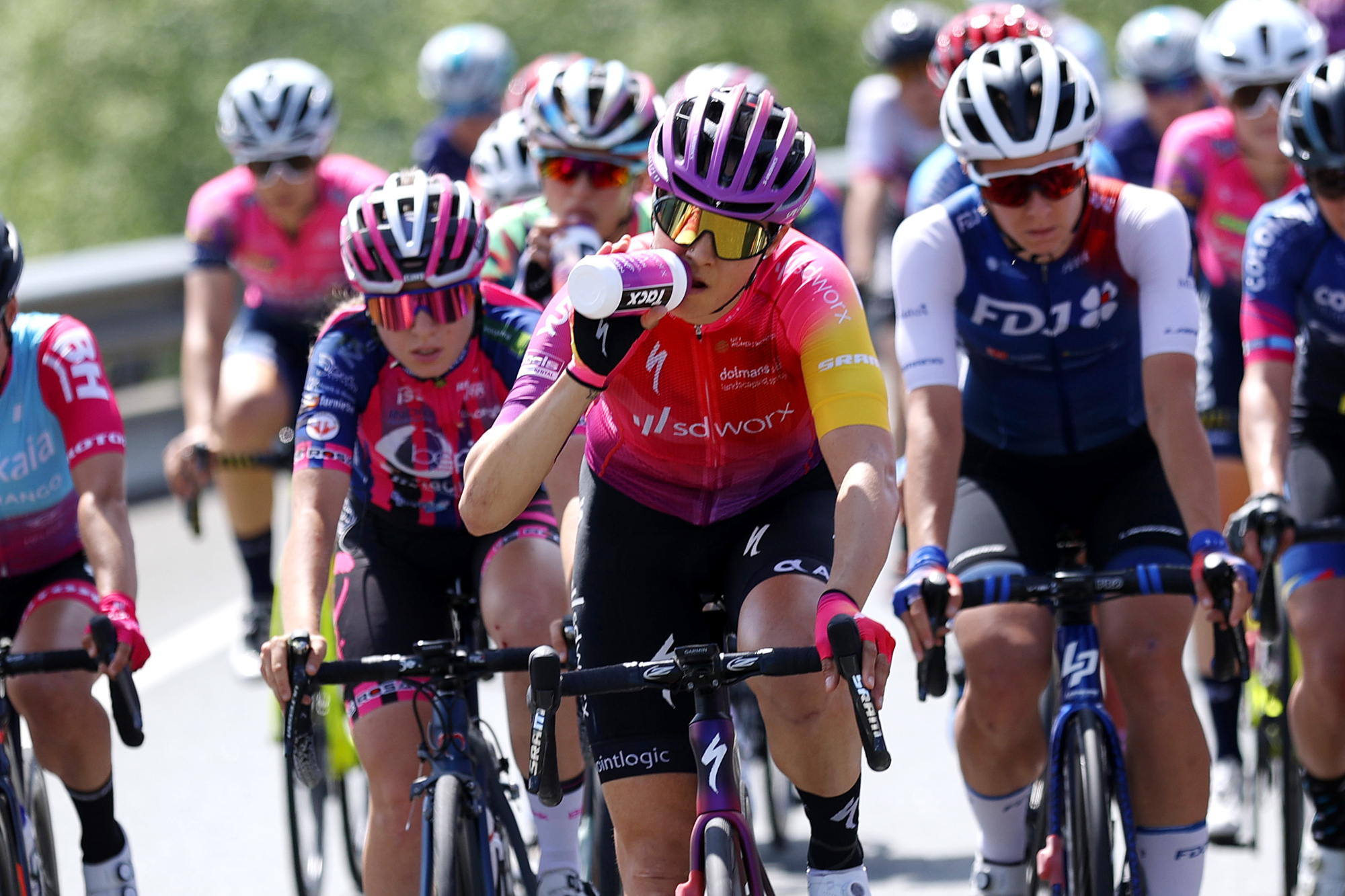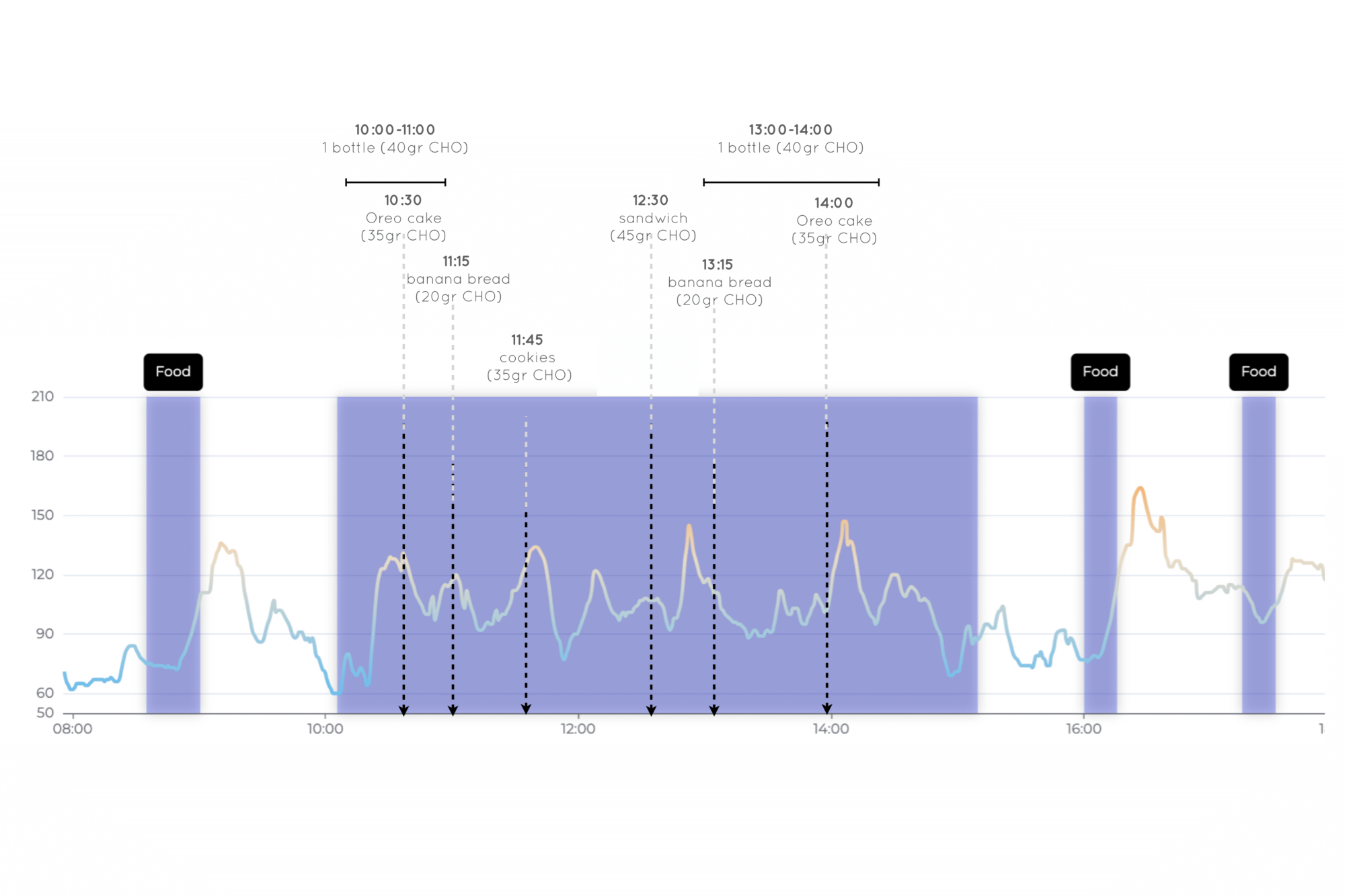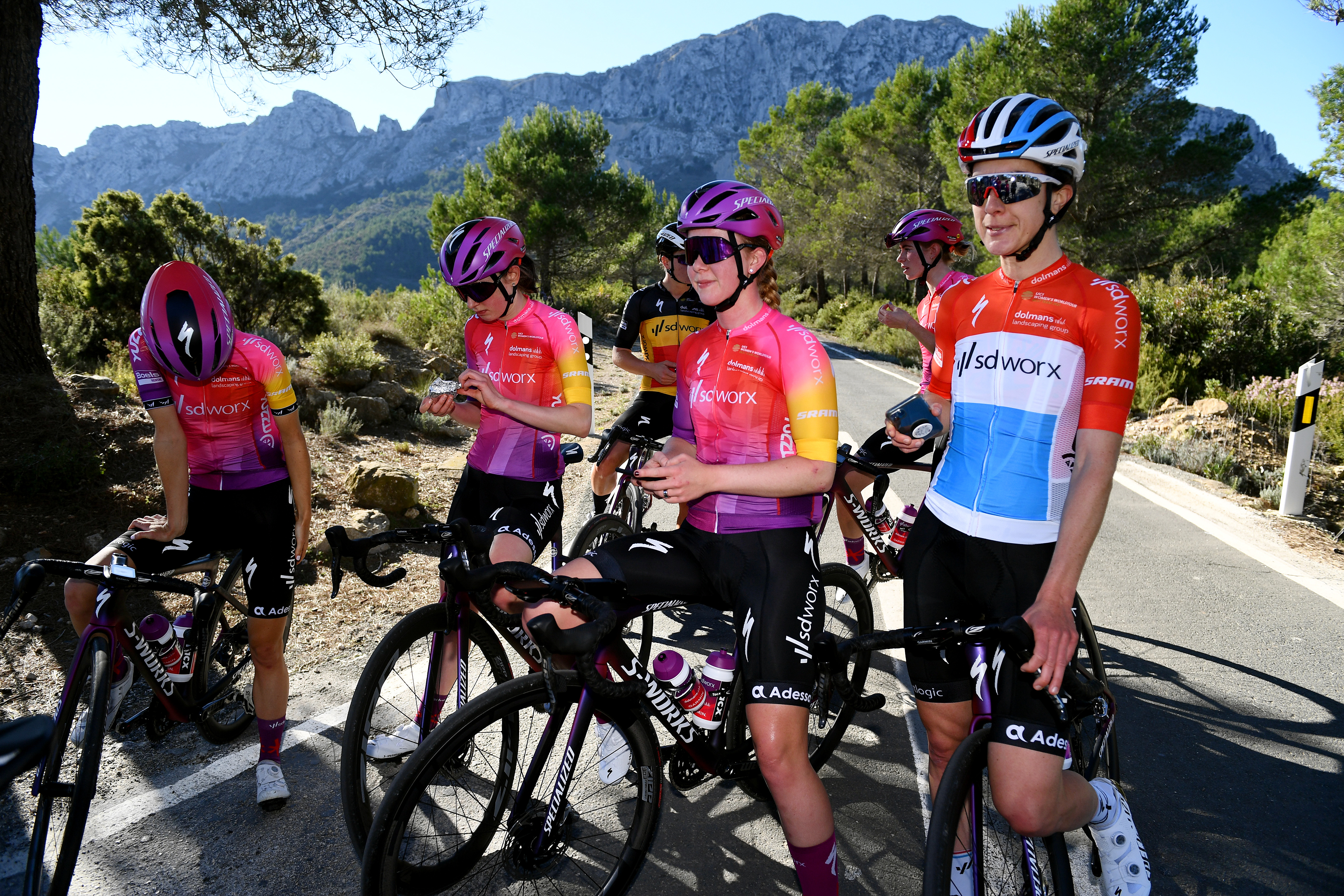‘It’s all in the timing’ – we catch up with World Tour team SD Worx to find what we can learn from pro-level nutrition tactics
Keeping your glucose levels stable is the golden rule - but that’s easier said than done


SD Worx has been going from strength to strength this season, with riders such as Demi Vollering and Lotte Kopecky being on the form of their life. But (usually) this isn’t something that just happens by accident. No, there’s a whole lot of analysis, adaptation and improvement behind every victory.
Although Ineos Grenadiers might get the credit for its trumpeting of ‘marginal gains’, SD Worx itself is not one to leave a stone uncovered. We took a deep dive into the more universal topic that’s relevant to us all – fuelling and nutrition for cycling. But just before we get into the details on exactly what SD Worx is trialling and succeeding with, now’s a good time for a quick analogy to help set the context…
It’s not as though no one had the faintest clue of how to train effectively before the dawn of the power meter. By some estimates Eddie Merkx might have held as much as 450 watts for his hour record back in 1972. It’s also not as if merely equipping your bike with one and cataloguing your numbers is enough to suddenly turn just anyone into a cycling demi-god.
No. Naturally, there is a lot more nuance to it than that.
Training with a power meter can offer guidance and provide insights we wouldn’t have otherwise had. Equally, sometimes they end up just confirming information that can be derived from other sources. Although power meters can be used to estimate fatigue levels, you can get that from tracking heart rate – as well as good old fashioned subjective introspection (considering how you feel).
With all that in mind, back to SD Worx and their nutrition strategy. Superspaiens has produced a blood glucose monitoring device and it made the cut in our predictions for 'the next big thing' in training tech for cycling.
Since partnering with Supersapiens, the team has been parsing through the data they’ve been gathering – some of it has provided further confirmation of the strategies they already had in place; other parts have been real eye openers.
Get The Leadout Newsletter
The latest race content, interviews, features, reviews and expert buying guides, direct to your inbox!
What is Supersapiens?
Supersapiens has produced a (large) coin-sized monitor that you stick onto your arm and will continually measure your blood glucose (i.e. sugar) levels. This is very important and useful for diabetics who can’t produce their own insulin, which is your body’s mechanism for keeping your glucose levels in check - not too high or too low.
But non-diabetics still experience peaks and troughs in their glucose levels as a result of the food they are (or are not) consuming - keeping a handle on this has great potential for your physical performance, helping to ensure that you’re sufficiently fuelled for the work required. The system is growing in popularity and SD Worx is one of the World Tour team currently using the tech.

SD Worx’s food coach, Shara Marche, and budding young pro Lonneke Uneken, shared with us how the team is now better timing their nutrition during races and on rest days, what fuels they’re using and when, and the fueling that’s required when in the luteal phase of the menstrual cycle.
Through the team’s testing, SD Worx has also been able to quantify that qualitative platitude of ‘everybody’s nutrition requirements being different’. Let’s jump into it!
Timing your nutrition
On the bike
Perhaps most significant for SD Worx has been the underlining of just how important it is to take on fuel at the right time.
Now, there are some principles most of us are already familiar with, such as the idea that it takes about 20 minutes for the fuel you take on to hit your bloodstream and power your muscles. A gel in the last 5km is only really going to have a psychological benefit, as the sugars will still be hanging around your stomach by the time you reach the finish line.
But a consideration that most people perhaps aren’t as aware of is that of keeping your blood sugar levels stable. After all, the flipside of a sugar-high is a sugar-low – Marche explained: “It’s when your blood sugar levels go really high and then start to drop that you feel terrible. For a sustained performance it’s important that the insulin doesn't spike as much.”

Although it does make some intuitive sense waiting until after you’ve made a big effort to take on a gel, what you’re essentially doing there is letting your glucose levels deplete into a large dip – and then giving yourself a massive spike. It’s swinging from one extreme to the next.
Sharing her experience, Uneken said: “Since I’ve started fueling before my efforts – instead of afterwards – I can see that my glucose levels have been more stable, and this has helped me with feeling fresher and more recovered.”
Essentially, by flattening out those peaks and troughs in this way, you’re putting less of a demand on your body and ensuring the fuel is there ready when it’s needed – rather than piling it on later.
But although SD Worx has been finding gains in adjusting the timing of when the riders take on their nutrition, what’s most fundamental is that you are taking on enough nutrition in the first place. “We have a protocol of 60 to 90 grams of carbohydrates per hour,” Marche confirmed .
But earlier in the season, SD Worx did some semi-controlled testing, which highlighted for the team just how great a variance there can be between riders.

Kristina Skroce, Supersapiens' sports physiologist said: “We saw that during their five-hour rides, even if all the girls ate quite similarly and did exactly the same endurance zone effort – some of them experienced a greater drop in their glucose levels than others. It was really cool to see just how different they all are – and what they each needed to perform at their best.”
For riders who don’t have access to glucose monitoring devices (most of us!), it could be worth playing around with the amount of nutrition you’re taking on in your rides. You might find that you’re simply underfuelling and that your performance at the end of long sessions could be improved instantly by increasing your intake of carbs – rather than chasing that elusive 15 watt increase in your FTP.
Off the bike
The riders at SD Worx have been finding that these same principles of keeping blood sugar levels stable are equally beneficial on rest day and when off the bike. Uneken said: “I’ve tried eating smaller portions during the day and not three big meals. Having four or five smaller portions has kept my glucose levels more stable throughout the day and I’ve been feeling better for it.”
Alongside the data showing the peaks and troughs of the riders’ blood sugar levels, the glucose monitors also highlighted problems with not enough carbs being taken on during the day, leading to sub-optimal recovery at night.
“After I’ve had a big training blocks, after a few days the Supersapiens data revealed that my glucose levels go down really low during the night,” Uneken told us, “There is a certain level that you want to be in to optimise your recovery after cycling – and it also helps you sleep better when you’re in that window.”
Of course, there is a balance to be struck between taking on the right amount of fuel and not eating excessively. It can be easier to find that balance when being guided by the numbers, but even without that kind of data – if you’re finding yourself stuck in a training rut and plateauing in your fitness gains, or perhaps feeling lethargic after you wake up, it might be worth eating a little more before you sleep and seeing if that helps.
What fuels to use

On the bike
It’s not just the timing of when you take on fuel that’s important, the form the fuel takes has a big impact too. We’re probably all well versed at this point in the difference between simple carbohydrates that release energy quickly (sugar in its various forms) and complex carbohydrates that release their energy more slowly (found in oats, pasta and bread).
Not only do the peaks differ between the two energy sources – simple carbs being quite short and sharp, whereas complex carbs ‘flatten the curve’, so to speak. But the lows afterwards vary as well, with simple carbs leaving you dipping deeper than complex ones.
Marche explained: “Energy bars and gels are really different. Both take at least 20 minutes to get into your bloodstream, but bars will give you more of a consistent performance without too much of a spie, whereas gels spike much higher.”
“Our advice is that bars are taken on more towards the start of the race, when more consistent energy is required. Then, towards the end, the girls will switch to gels when those spikes are more beneficial.”
Uneken confirmed: “I can see a difference between gels and bars: with the gels they spike more – but in the final section of the race, that’s also what you need. On longer rides, though, I tend to eat a lot more solid foods so that my glucose levels are more stable.”
Off the bike
In the leadup to important races – and also long endurance rides – it’s important to make sure that your glucose levels are topped up using complex carbohydrates. “It’s not just the evening before that’s important, but even the fuelling two days before,” Marche explained.
“Breakfast on the day is very important, with most riders performing best finishing a big meal three hours before the event starts – or two hours and 40 minutes in some cases. Usually, one hour before the race they’ll have a small snack too.”
It’s worth bearing in mind that it’s important to still have some sugar in your diet – even on rest days – in order for it to properly function. Between about 24 and 36 grams is recommended. But remember, not all sugars are the same – it’s much healthier to get them from fruits rather than your tea.
Fuelling around the menstrual cycle
It’s well known that the menstrual cycle can have a significant effect on our appetite through the luteal phase – so, can the Supersapiens glucose monitor shine some light on what might be going on at that time of the month?
Well, Marche told me: “There’s a lot happening at that point: weight can be heavier for some girls around their period as they retain a lot of water. The core temperature can be higher, they can be a lot more hungry. The upshot is they’ll probably need a little bit more carbohydrates at this time of the month.”
But speaking to Uneken, her data hasn’t shown her anything particularly concrete: “Usually when you’re around your period you need more carbs, but I can’t say I’ve really seen anything in my numbers so far.”
As the UCI still prohibits the use of glucose monitors in races, data on the SD Worx team was always going to be patchy through the season, though. Although incomplete, the data has still provided a lot of direction during their training and has equipped them with knowledge that they’ve been able to forward into their races.

Thank you for reading 20 articles this month* Join now for unlimited access
Enjoy your first month for just £1 / $1 / €1
*Read 5 free articles per month without a subscription

Join now for unlimited access
Try first month for just £1 / $1 / €1

I’ve been hooked on bikes ever since the age of 12 and my first lap of the Hillingdon Cycle Circuit in the bright yellow kit of the Hillingdon Slipstreamers. For a time, my cycling life centred around racing road and track.
But that’s since broadened to include multiday two-wheeled, one-sleeping-bag adventures over whatever terrain I happen to meet - with a two-week bikepacking trip from Budapest into the mountains of Slovakia being just the latest.
I still enjoy lining up on a start line, though, racing the British Gravel Championships and finding myself on the podium at the enduro-style gravel event, Gritfest in 2022.
Height: 177cm
Weight: 60–63kg
-
 'This is the marriage venue, no?': how one rider ran the whole gamut of hallucinations in a single race
'This is the marriage venue, no?': how one rider ran the whole gamut of hallucinations in a single raceKabir Rachure's first RAAM was a crazy experience in more ways than one, he tells Cycling Weekly's Going Long podcast
By James Shrubsall
-
 Full Tour of Britain Women route announced, taking place from North Yorkshire to Glasgow
Full Tour of Britain Women route announced, taking place from North Yorkshire to GlasgowBritish Cycling's Women's WorldTour four-stage race will take place in northern England and Scotland
By Tom Thewlis